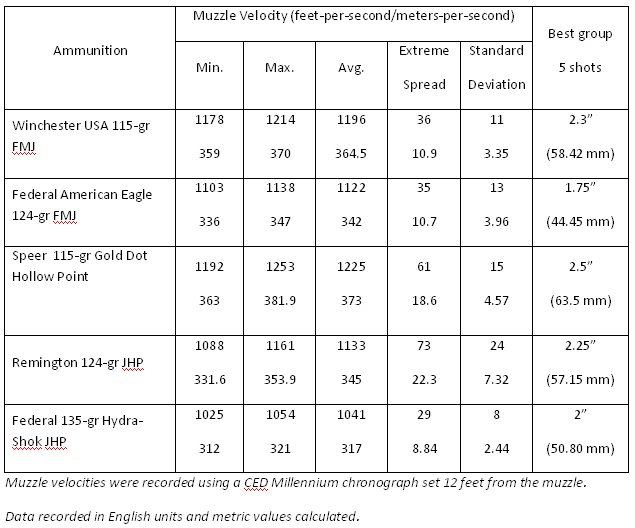Yes, "Don't shoot the chrono" (says the guy who has done so more than once).
Years ago, in doing a series of chonograph testing, I noticed that with some [commercial] rounds but not others, as I progressed to guns with shorter barrels I began getting more errors -- that being shots for which the chrono (a CED Millennium) registered "ERR." What I realized was that there was enough still-burning powder being ejected from the shorter barrels that the hot ejecta were messing up the chronograph's detector.
I had it set up at 12 feet. I moved it to 15 feet and that solved the problem. That said, I read a lot of gun tests in which the author states that the chrono was set up 10 feet from the muzzle. The IDPA rule on conducting the chrono test is 8.3.2:
8.3.2
Official Chronograph Procedure
Chronograph is conducted with the competitor present. Ammunition is pulled and/or bagged prior to arriving at the chronograph stage. The chronograph official will use the competitor-supplied firearm, and the following procedure will be used:
A.
If two of the three rounds meet or exceed the required power factor, the ammunition is in compliance. Prior to each shot, the muzzle of the firearm will be elevated to vertical (if range rules permit) to move the powder charge to the rear of the case, thus giving the competitor every chance to achieve maximum velocity.
B.
A bullet will be pulled and weighed using a powder scale. If two rounds exceed the highest velocity for the caliber and power factor, pulling the bullet and weighing is optionally waived.
C.
A competitor whose ammunition fails to make power factor will be allowed to shoot the match, but their total score will be a disqualification.
What this rule does not tell us is what distance to set the chronograph. I have never shot in a big match where they actually checked competitors' ammo so I have no first-hand experience. I've reached out to a friend who is a long-time SO and match director to ask for his input. I'll report what he says if/when he gets back to me. For starters, try using ten feet. If you get errors, move it to twelve feet. If you still get errors, move it to fifteen feet.
Or just start at fifteen feet, to be safe. If you make power factor at fifteen feet, you'll make power factor at ten or twelve feet.
I will also suggest that you might need a few more rounds at each level. The IDPA standard is that two out of three rounds, chosen at random, must make the power factor. I have always used five rounds as my standard, allowing me to get some sense of how much variation I have between/among rounds at a given charge. For most purposes I'm looking at the average velocity but, for IDPA, ideally you want to be sure that NONE of your rounds are below the minimum power factor. If you only have two rounds of each charge weight, you only know that two rounds produce 'X' velocity. If both are well above the required power factor, that's not a problem. You are seeking to just make minimum, so a sample size of two rounds, IMHO, isn't large enough.
Also note that the IDPA procedure calls for tipping the muzzle up (if allowed by the range rules) to settle the powder at the rear of the case. This helps to maximize velocity. If you can't tip the muzzle up, consider dropping the magazine between shots, tapping the spine of the magazine on the bench to shift the powder back, and then reinserting the magazine into the pistol as gently as possible in order to keep the powder at the rear of the case.
-----
Preliminary response from my IDPA SO friend -- he doesn't know, either. He wrote that he is reaching out to other officials whom he knows. I'll post back if there's anything useful that comes back.

